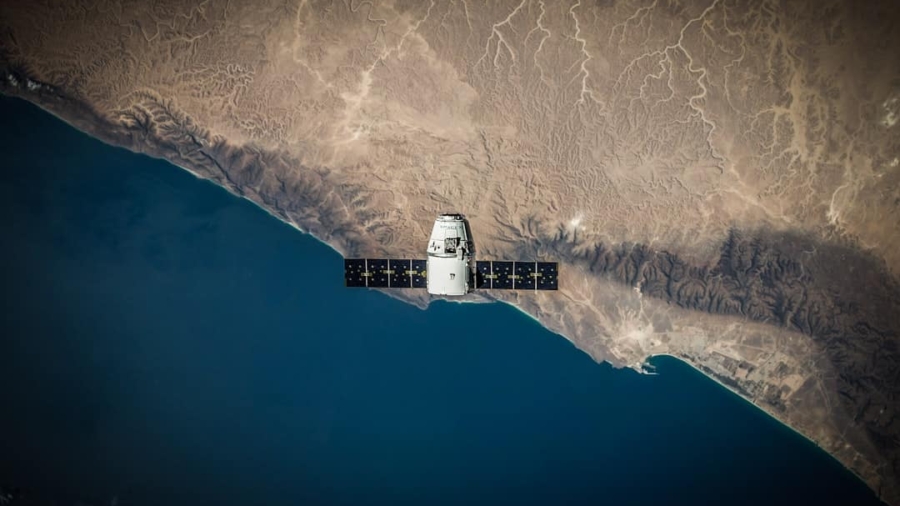Satellites have become a cornerstone of modern communication, playing a pivotal role in expanding global internet access. The advent of satellite technology has revolutionized the way information is transmitted across vast distances, enabling connectivity in regions where traditional infrastructure is either inadequate or entirely absent. By orbiting the Earth, satellites can provide coverage to remote and underserved areas, effectively bridging the gap between urban centers and rural locales.
This capability is particularly crucial in a world increasingly reliant on digital communication, where access to the internet is often equated with access to information, education, and economic opportunities. The deployment of satellite constellations has accelerated in recent years, with companies like SpaceX’s Starlink, Amazon’s Project Kuiper, and OneWeb leading the charge. These initiatives aim to create networks of low Earth orbit (LEO) satellites that can deliver high-speed internet to users on the ground.
Unlike traditional geostationary satellites, which orbit at a much higher altitude and can introduce latency issues, LEO satellites promise lower latency and faster data transmission rates. This shift in satellite technology is not merely a technical upgrade; it represents a fundamental change in how we think about global connectivity and the potential for universal internet access.
Key Takeaways
- Satellites play a crucial role in providing global internet access, especially in remote and underserved areas.
- Satellite internet connectivity offers advantages such as wide coverage, high-speed internet, and the ability to reach areas where traditional infrastructure is lacking.
- Challenges and limitations of satellite internet include latency, signal interference, and high costs for both providers and users.
- Satellites are bridging the digital divide by bringing internet access to areas with limited or no connectivity, thus promoting digital inclusion.
- Satellite internet is essential for rural connectivity, enabling residents in remote areas to access online education, telemedicine, and e-commerce.
- The future of satellite internet technology holds promise for improved speed, capacity, and affordability, expanding its reach and impact.
- Satellite internet plays a critical role in emergency response by providing communication and connectivity during natural disasters and humanitarian crises.
- Satellite internet has a significant impact on global business by enabling connectivity for remote operations, e-commerce, and international communication.
Advantages of Satellite Internet Connectivity
One of the most significant advantages of satellite internet connectivity is its ability to reach remote and rural areas where terrestrial internet infrastructure is lacking. In many parts of the world, especially in developing nations, laying down fiber optic cables or building cell towers can be prohibitively expensive and logistically challenging. Satellite internet circumvents these issues by providing a direct line of communication from space to the ground, allowing users in isolated regions to access the same online resources as those in urban environments.
This capability can empower communities by facilitating access to educational materials, healthcare information, and economic opportunities that were previously out of reach. Moreover, satellite internet offers a level of resilience that terrestrial networks often cannot match. Natural disasters such as hurricanes, earthquakes, or floods can severely disrupt ground-based communication systems.
In contrast, satellites remain operational as long as they are not directly affected by the disaster itself. This resilience makes satellite internet an invaluable resource for emergency response teams and humanitarian organizations that need reliable communication channels during crises. The ability to maintain connectivity in adverse conditions can be life-saving, enabling timely coordination of relief efforts and ensuring that affected populations receive critical information.
Challenges and Limitations of Satellite Internet

Despite its many advantages, satellite internet is not without its challenges and limitations. One of the primary concerns is latency, particularly with traditional geostationary satellites that orbit at approximately 22,236 miles above the Earth. The distance that signals must travel can result in noticeable delays, making activities such as online gaming or video conferencing less than optimal.
While LEO satellites significantly reduce latency due to their closer proximity to the Earth—typically around 1,200 miles—the technology is still evolving, and achieving consistent low-latency performance across vast networks remains a challenge. Another significant limitation is bandwidth availability. Satellite internet connections often have data caps or limited bandwidth compared to terrestrial options like fiber optics.
This limitation can hinder users who require high-speed connections for activities such as streaming high-definition video or conducting large data transfers. Additionally, weather conditions can impact satellite signals; heavy rain or snow can lead to signal degradation, resulting in slower speeds or temporary outages. These factors must be considered when evaluating satellite internet as a viable option for consistent and high-quality connectivity.
How Satellites are Bridging the Digital Divide
The digital divide—the gap between those who have easy access to digital technology and those who do not—remains a pressing global issue. Satellites are playing an increasingly vital role in bridging this divide by providing internet access to underserved populations worldwide. In many developing countries, where traditional infrastructure is lacking or non-existent, satellite technology offers a feasible solution for connecting individuals and communities to the digital world.
By enabling access to online resources, satellite internet can foster economic development, improve educational outcomes, and enhance overall quality of life. For instance, initiatives like the United Nations’ Broadband Commission for Sustainable Development emphasize the importance of universal internet access as a means to achieve sustainable development goals. By leveraging satellite technology, governments and organizations can implement programs that provide affordable internet access to marginalized communities.
This approach not only empowers individuals with information but also facilitates participation in the global economy. As more people gain access to the internet through satellite connections, they can engage in e-commerce, remote work opportunities, and online education—transforming their socio-economic prospects.
Satellite Internet and Rural Connectivity
Rural areas often face unique challenges when it comes to internet connectivity. The sparse population density makes it economically unfeasible for service providers to invest in extensive terrestrial infrastructure. Satellite internet emerges as a practical solution for these regions, offering a means to connect residents who might otherwise be left behind in an increasingly digital world.
With satellite technology, rural communities can access essential services such as telehealth consultations, online education platforms, and e-government services that enhance their quality of life. In the United States, for example, initiatives like the Federal Communications Commission’s (FCC) Rural Digital Opportunity Fund aim to expand broadband access in rural areas through various means, including satellite technology. By providing subsidies for satellite internet services, the government encourages providers to reach underserved populations.
This effort not only addresses immediate connectivity needs but also fosters long-term economic growth by enabling rural businesses to compete in a digital marketplace. As more rural residents gain reliable internet access through satellites, they can participate more fully in society and benefit from the opportunities that come with being connected.
The Future of Satellite Internet Technology

The future of satellite internet technology is poised for significant advancements as companies continue to innovate and expand their networks. The shift towards low Earth orbit satellites represents a major leap forward in terms of speed and latency reduction. As more LEO satellites are launched into orbit—creating vast constellations capable of providing global coverage—the potential for seamless connectivity increases dramatically.
Moreover, advancements in satellite technology are likely to enhance bandwidth capabilities and reduce costs for consumers. As competition among satellite providers intensifies, prices may decrease while service quality improves.
Innovations such as phased array antennas and advanced signal processing techniques will further optimize data transmission and reception. Additionally, partnerships between satellite companies and telecommunications providers could lead to hybrid solutions that combine terrestrial and satellite networks for even greater reliability and performance.
Satellite Internet and Emergency Response
In times of crisis, reliable communication is paramount for effective emergency response efforts. Satellite internet plays a crucial role in ensuring that first responders have access to real-time information and can coordinate their actions efficiently. During natural disasters or humanitarian emergencies, ground-based communication infrastructure may be compromised or entirely destroyed.
In such scenarios, satellite technology provides an alternative means of communication that remains operational regardless of local conditions. Organizations like the International Federation of Red Cross and Red Crescent Societies (IFRC) have recognized the importance of satellite internet in disaster response efforts. By equipping emergency response teams with satellite communication tools, they can maintain contact with command centers and other agencies involved in relief efforts.
This capability allows for better resource allocation and coordination among various stakeholders working to assist affected populations. Furthermore, satellite imagery can be utilized to assess damage and plan recovery efforts more effectively.
The Impact of Satellite Internet on Global Business
The proliferation of satellite internet has far-reaching implications for global business operations.
For multinational corporations operating in remote areas or regions with limited infrastructure, satellite internet ensures that they can maintain operations without interruption.
Additionally, small businesses in underserved areas can leverage satellite internet to expand their reach beyond local markets. E-commerce platforms enable these businesses to sell products globally, while online marketing tools allow them to connect with potential customers worldwide. As more entrepreneurs gain access to reliable internet through satellites, they can innovate and compete on a larger scale than ever before.
Furthermore, industries such as agriculture are experiencing transformative changes due to satellite connectivity. Farmers can utilize precision agriculture techniques powered by satellite data to optimize crop yields and manage resources more efficiently. This integration of technology into traditional sectors not only enhances productivity but also contributes to sustainable practices that benefit both the environment and local economies.
In conclusion, the role of satellites in global internet access is multifaceted and continues to evolve rapidly. As technology advances and more initiatives are launched to expand connectivity through satellites, we can expect significant changes in how individuals and businesses interact with the digital world. The potential for bridging gaps in access and fostering economic growth is immense, making satellite internet an essential component of our increasingly interconnected society.
In the rapidly evolving landscape of global internet access, satellites are playing a pivotal role in bridging the digital divide. As highlighted in the article “How Satellites Are Transforming Global Internet Access,” the deployment of satellite technology is revolutionizing connectivity, especially in remote and underserved regions. For those interested in exploring how digital platforms are leveraging these advancements, the article on The Best Apps for Facebook 2023 provides insights into how social media applications are adapting to enhanced internet accessibility. This synergy between satellite technology and digital platforms is paving the way for more inclusive and widespread internet usage.
FAQs
What is the role of satellites in global internet access?
Satellites play a crucial role in providing internet access to remote and underserved areas around the world. They help bridge the digital divide by enabling connectivity in regions where traditional infrastructure is lacking.
How do satellites enable internet access in remote areas?
Satellites transmit internet signals to ground stations, which then distribute the connectivity to users in remote areas. This allows people in rural or isolated regions to access the internet without relying on traditional terrestrial infrastructure.
What are the benefits of using satellites for internet access?
Using satellites for internet access can provide reliable connectivity in areas where traditional infrastructure is not feasible. It also enables rapid deployment of internet services in disaster-stricken areas and supports global connectivity for maritime and aviation industries.
What are some challenges associated with satellite internet access?
Challenges include high latency due to the distance signals travel between satellites and ground stations, as well as the cost of satellite internet services. Additionally, satellite internet may be susceptible to weather-related disruptions.
How are satellites improving global internet access in the future?
Advancements in satellite technology, such as the development of low Earth orbit (LEO) satellite constellations, are expected to improve internet access by reducing latency and increasing bandwidth. These innovations have the potential to further transform global internet access and bridge the digital divide.

